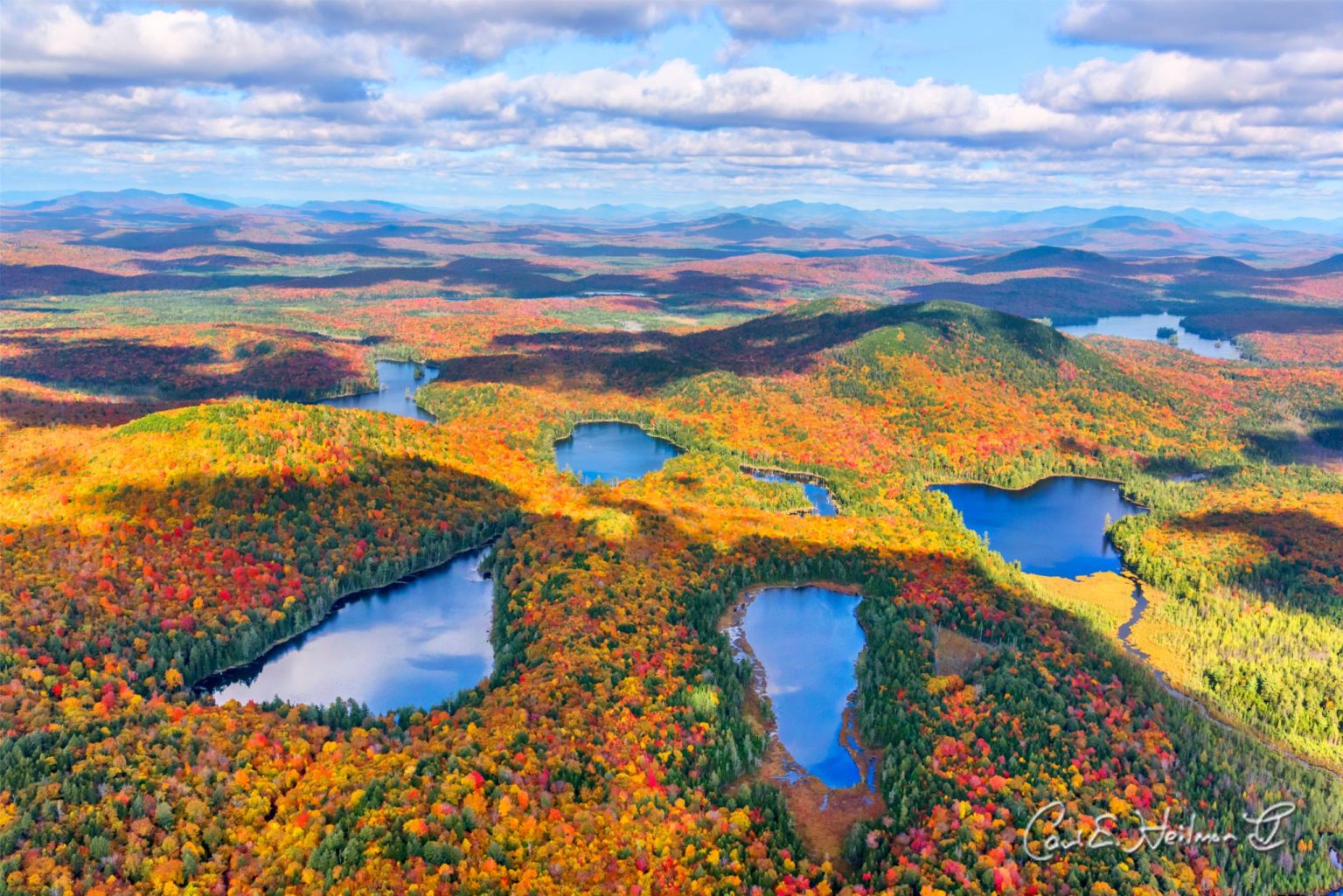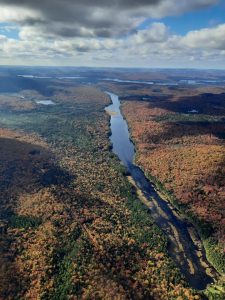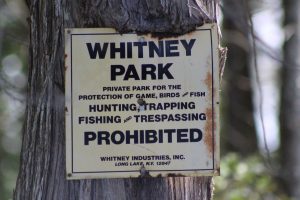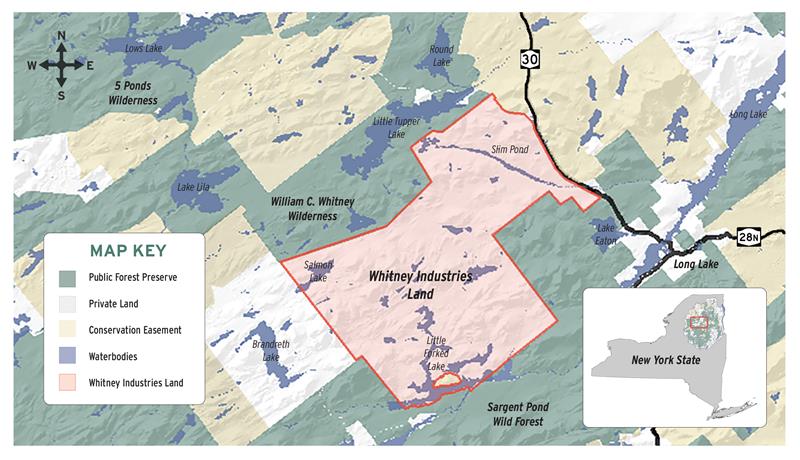 The Whitney Estate, Long Lake, NY
The Whitney Estate, Long Lake, NY
Founded in 1897, the Whitney family’s Adirondack estate in the Town of Long Lake is nearly as old as the Adirondack Park (1892). It was established by William C. Whitney, Secretary of the Navy during the Grover Cleveland administration and a member of a sportsmen’s club on Little Forked Lake. He purchased about 80,000 acres.
William C. Whitney was the grandfather of Cornelius Vanderbilt “Sonny” Whitney. Sonny Whitney also cared deeply for the local landscape, returning whenever he could to oversee his timber operation and preserving important fisheries. In 1958, he married actress Marie Louise (Marylou) Schroeder. He sold pieces of the estate to neighbors and associates over the years. He passed in 1992 at the age of 93.

In 1997, Gov. George Pataki’s Dept. of Environmental Conservation bought for $17 million a 15,000-acre tract containing Little Tupper Lake, which was until then the largest private lake in a single ownership in America. Pataki combined these 15,000 acres with the adjacent Lake Lila Primitive Area to create the William C. Whitney Wilderness Area.
Marylou bequeathed the remainder of the property on her passing in 2019 (age 93) to her widower John Hendrickson. He placed the entire estate up for sale in 2020. He published a map showing the tract chopped into 11 separate lots, with proposed price tags totaling $238 million. However, he never filed a permit application for the subdivision. In August of 2024, Hendrickson passed away suddenly at the age of 59.
In March of 2025, Hendrickson’s family announced that his last will and testament directed the proceeds from the sale be given to the Town of Long Lake, population 791. This was welcome news to the town’s residents and taxpayers. They have been subsidizing the local property tax abatement granted to Whitney Industries, the family’s timber company that owned and managed the forest surrounding their homes. Enrolled in the Fisher Act, Whitney Industries lands had their tax assessments frozen at 1926 rates. By 2024, property taxes per acre on Whitney lands were about one-quarter of the tax bill for owners of comparable lands.
In June of 2025, the Hendrickson family said that it had signed an agreement with Texas-based development company Todd Interests, managed by Shawn Todd of Dallas, to buy the entire estate for $125 million.
Today, the 36,000-acre (57 square miles) estate is equal in size to Staten Island, or 2.5 times the size of Manhattan. It is one-third larger than the Disney World collection of resorts in Orlando, Florida. The property includes the historic Great Camp Deerlands, a 17-bedroom, 11-bath rustic-style mansion with outbuildings including a two-story boathouse on Little Forked Lake, built by William West Durant.

An Ecological Paradise
The Whitney property contains more than 30 lakes and ponds and hundreds of miles of brooks and streams, a series of interconnected waterways. Its possibilities as a paddler’s paradise are unrivaled on the East Coast. More importantly, its waters contain sensitive trout habitat, much of which is now in better shape than it was 20 years ago when acid rain was causing daily harm. Vast wetlands serve as the wildlife nurseries to the region, providing protected habitat for local and migratory birds, fish, amphibians, and reptiles whose homes are threatened elsewhere. Perhaps most important of all, the Whitney property’s limited development and lack of public highways allow it to connect a broad array of Adirondack wildlife habitats and ecosystems. These uninterrupted connections will be crucial to wildlife survival as climate change forces species to move from current locations to newly suitable homes. The western Adirondacks is the ideal location for it, given its lack of major highways or communities, and its connections to the forests and the Great Lakes, St. Lawrence Valley and the parks of southern Ontario.
Wilderness Society co-founded Bob Marshall identified the area in the 1930s as one of the few remaining landscapes east of the Mississippi Valley where a wilderness of 300,000 acres or more could still be established that would allow long-lost species such as the cougar and timber wolf to return to the Adirondacks without coming into conflict with highways and communities. Remarkably, a century later, the plan remains viable. In fact, it can be the centerpiece of a 600,000-acre wildlands complex that would incorporate the surrounding hamlets into an access plan that would draw new tourism and make them gateways to the largest collection of outdoor recreation opportunities in the Northeast.
State Open Space Conservation Plan Recommends Protection
The Whitney property comprises the northeastern corner of the Adirondack Council’s proposed 408,000-acre Bob Marshall Great Wilderness or Wildlands Complex, which would be large enough and wild enough to host the return of large Adirondack natives such as the moose, timber wolf, and someday, the cougar. The last moose and last cougar recorded as shot by hunters in the Adirondacks were shot on Whitney property. In 1993, the Council’s plan was incorporated into the NYS Open Space Conservation Plan, which guides the state’s strategic fair market value investments in open space preservation.

